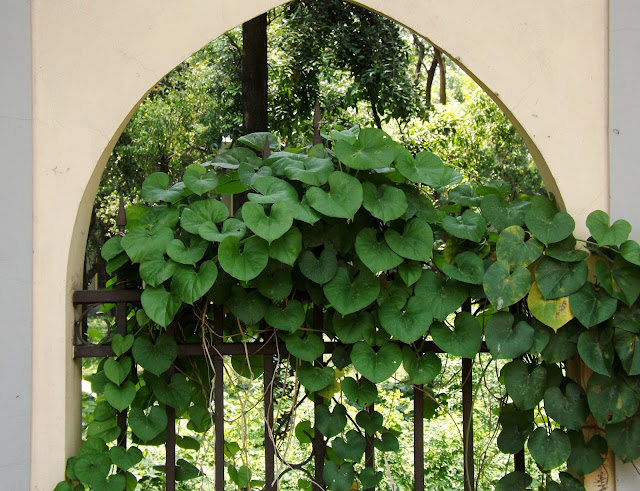Mushok-dana or Musk-mallow, Abelmoschus moschatus
Mushok-dana or Musk-mallow (Abelmoschus moschatus, family: Malvaceae) is a perennial erect herb or undershrub attaining a height of 3 m. Stem is cylindrical and reddish. Young shoots, pedicel and petiole are retrorsely (opposite direction) hairy.
The plant almost looks similar to popular vegetable Okra (abelmoschus esculentus). It is found near the water bodies, fallow lands, roadside areas and forest edges in Bangladesh. It is also found in India as well as Southeast Asia.
The another Bangla name of the plant is Kala-kosturi.
Lower leaves are angular, upper palmately lobed, dark green, oblong-lanceolate, ovate, 20-24 cm long, serrate or dented, hairy on both sides. Leaf-base has a crown-like portion. Petiole is very long.
Flower axillay, solitary and in terminal clusters. They are big, light yellow with dark purple center, petals 5, unequal; corolla 10 cm across. Epicalyx segments 6-10, linear-lanceolate. Flowering occurs in the rainy season. Flower and fruit can be seen together in the same plant till late autumn.
Fruit is a capsule, 5-angled, dark brown, dehiscent; 4-6 cm long and 2-4 cm wide, ovoid-oblong. Seeds are scented, black in color, ovoid and glabrous.
Stem yields a jute-like fibre suitable for making ropes. A kind of perfumed oil is extracted from its crushed seeds.
The seeds with bitter and sharp taste are cooling, tonic, carmunative and aphrodisiac. The leaves and young parts are eaten as vegetables. The propagation of the plant is caused by seeds.








Comments
Post a Comment